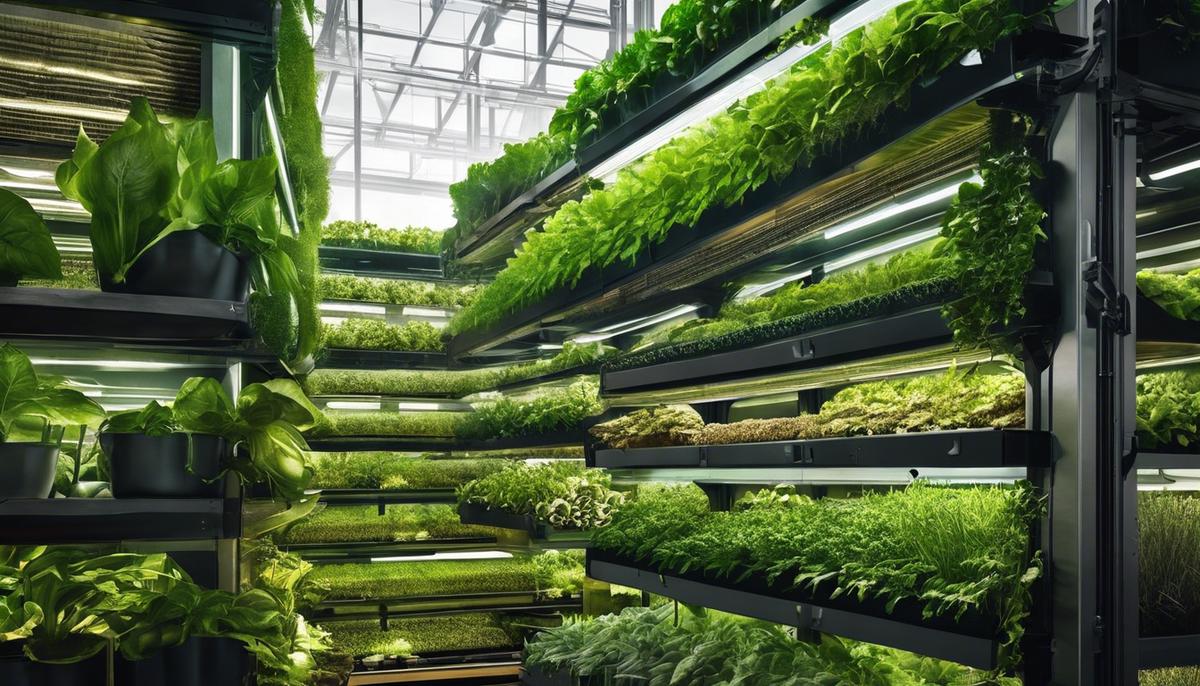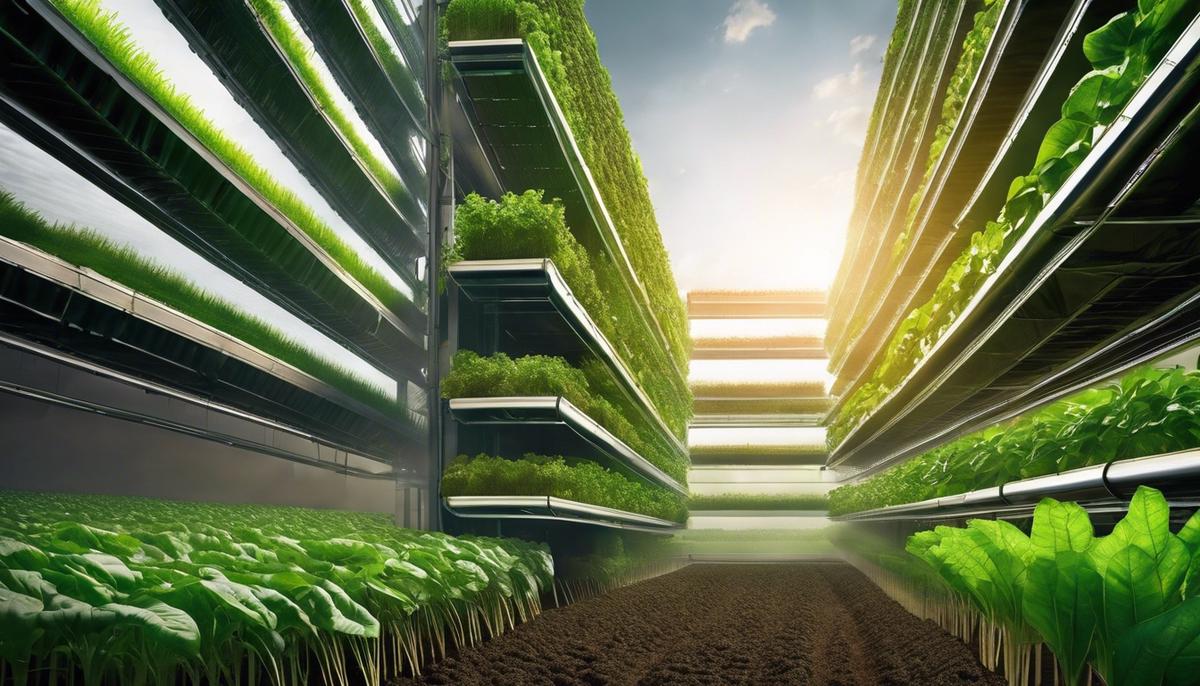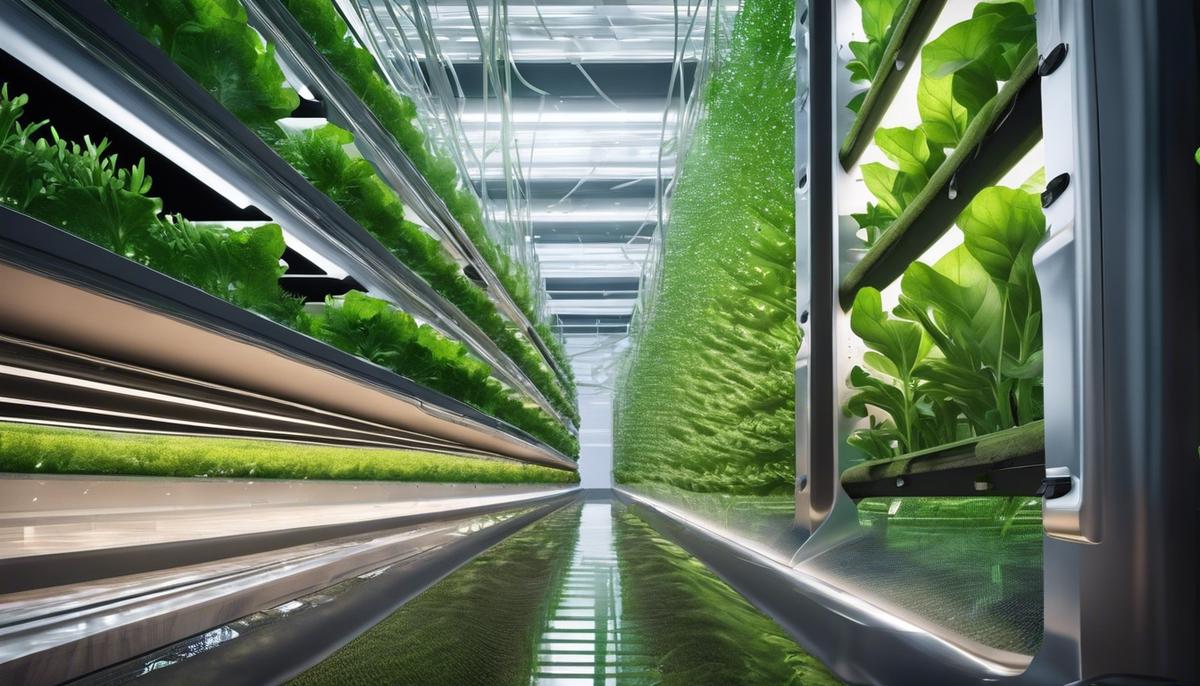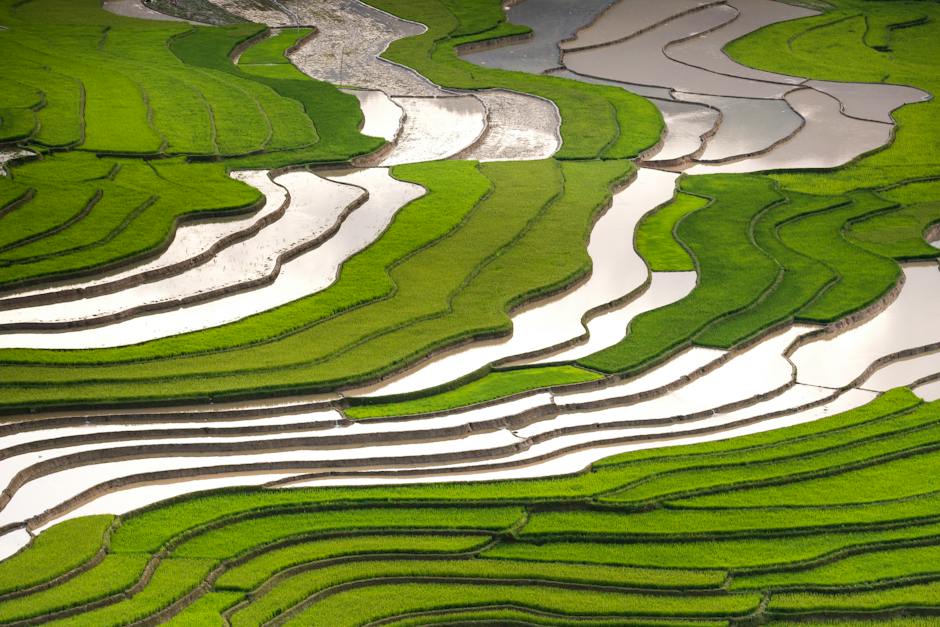

Agridisk
Egypt - Alexandria

Vertical agriculture definition, systems, advantages, solution, future & how is vertical farming profitable?
Description: As the world grapples with the challenges of increasing population, dwindling natural resources, and unpredictable climate patterns, innovative and sustainable solutions are essential to secure our future. One promising prospect that aims to transform the traditional approach to farming is vertical agriculture, a revolutionary concept that reimagines how we cultivate crops and vegetables. Through the stacking of agricultural layers, vertical farming seeks to maximize production within constrained spaces, offering myriad benefits that transcend the traditional agricultural model. This intriguing blend of technology and agriculture promises not only to ensure food security, but also to curb environmental deterioration while fostering a more sustainable future. As we contemplate the growing demand for food production in parallel with increasing urbanization and population growth, it invites an urgent need for innovative agriculture techniques capable of surpassing traditional farming limitations. Among various existing innovations, vertical agriculture strikes as an ingenious solution to the aforementioned issue, warranting profound investigation and elaboration. Vertical agriculture, an innovative farming technique, tends to use the vertical dimension to grow plants, consequently abating the pressure on precious land resources. It involves growing layers of crops, typically in a climate-controlled environment and often within urban locations. This space-efficient method of agriculture is typically facilitated by skyscrapers, shipping containers, or repurposed warehouses, working to augment the effectiveness per unit of land area significantly. The functionality of vertical farming roots in controlled-environment agriculture (CEA), where the growth of crops is optimized within an artificial environment. The synthesis of natural resources such as sun and soil are mimicked in these structures, allowing plants to thrive irrespective of precarious external weather conditions. Photosynthesis in the absence of sunlight is supported through LED lighting structures that emit specific wavelengths to stimulate plant growth. Concurrently, the soil is substituted by nutrient-infused water within a system known as hydroponics, whilst aeroponics enables plant growth in an air/mist environment almost devoid of soil. The major item of interest within this model of agriculture is not merely the effective utilization of space, but also the significant conservation of resources. Vertical agriculture requires far lesser water compared to traditional farming due to its reliance on closed-loop systems. This means the same water can be repeatedly used, reducing water consumption by almost 95 percent. Furthermore, the urban positioning of vertical farms greatly diminishes the carbon footprint associated with lengthy crop transportation, thus contributing to a more sustainable food production model. Vertical farms also present the possibility of producing crops year-round, irrespective of season or external weather conditions. As a result, they are fundamentally more reliable and consistent than the traditional, outdoor agriculture which remains susceptible to adverse environmental conditions. The adoption of vertical farming; however, is not exempt from challenges. High upstart costs, significant energy needs for artificial lighting and temperature control, are among the pressing concerns that may hinder the expansion of vertical farming. That said, it’s worth noting the continued evolution of technology might likely minimize these drawbacks, making vertical cultivation a feasibly sustainable alternative for future global food demands. In synergy with the push towards urbanization and sustainability, vertical farming presents an impressive path in agricultural practices. As our traditional agriculture systems struggle to keep pace with the world's ballooning population and urban expansion, it's prudent to delve deeper into alternatives, like vertical farming, that dare to reimagine the future of food production. Reducing reliance on large swaths of arable land, conserving water, and minimizing carbon footprints are not mere benefits, but necessities for a sustainable future, underlining the importance of vertical agriculture's integration into the modern world. Building upon this introduction to vertical agriculture, it is essential to discern the myriad benefits that this innovative method brings to the table. A significant advantage lies in the potential for increased crop yield. Given the vertical change in dimension, one can stack several layers of cultivation planes within the same footprint of land. This layer system disruptively augments the productive potential per unit area when compared to traditional farming methods. Besides, the controlled environment ameliorates crop growth cycles, encouraging multiple harvests per annum, which further maximizes yield. Vertical agriculture's indisputable efficiencies are manifest not only in the realm of space but also in the domain of time. The climatic control permits the farmers to evade the vicissitude of seasons, an untamable variable in conventional farming. Hence, vertical farming allows the luxury of perennial growth cycles, freeing us from strict adherence to seasonal farming calendars. Moreover, vertical farming allows for a reduced dependency on conventional farming inputs. The closed-loop system and targeted nutrient delivery eliminate the requirement for agrochemicals like pesticides. This significantly reduces the pollution engendered by their production and application, while also proactively preserving the health of consumers and biodiversity. A close corollary to this is the impeccable biosecurity standards possible within vertical farms. The insulated and monitored ambiance can uncompromisingly control pest invasions and disease outbreaks, rendering us less vulnerable to widespread crop failures, a common menace in conventional agricultural practices. Indeed, vertical farming is a harbinger of food sovereignty in urban agglomerations. Solidarity it fosters, vertical farming revitalizes local economies, reduces dependency on distant producers, and mitigates vulnerabilities associated with global supply chains. Concurrently, it engenders diverse landscapes within urban areas contributing to environmental aesthetics and offering outcomes beyond their intended agricultural pursuits. Another enticing prospect tied to vertical farming relates to its ability to abate the issue of food miles. Being implemented within the metropolis, it drastically shortens the journey from farm to fork. This governs the wastage often experienced during long hauls and decreases the carbon emissions attributed to transportation, making it a more sustainable choice. In a world increasingly experiencing the repercussions of climate change, the urgency for resilient and adaptive food systems is escalating. Therefore, the benefits of vertical farming extend far beyond pure food production; it paves the way for a more sustainable, equitable, and resilient future. This is the promise that vertical farming presents—a new frontier for food production, enabling us to rethink and reshape our relationship with the environment and food systems—responsive, responsible, and restorative. The profound viability of vertical agriculture is markedly evident with regards to the enhanced crop yield resultant from the strategic arrangement of plants in vertical stacks rather than traditional horizontal field layouts. This innovative approach enables a remarkably higher density of plant growth per square foot, optimizing space to an unprecedented extent and providing a solution to land shortage conundrums in populated urban landscapes. Furthermore, its multi-tier configuration facilitates the effective cultivation of various crop types contemporaneously, thereby opening up an avenue of fertile agricultural diversity. Integral to the vertical agriculture model is the concept of the controlled environment. It strips away the capriciousness associated with conventional open-field farming, granting cultivators the ability to schedule multiple harvests in a single year by controlling temperature, humidity, and light levels with precision. It categorically eradicates the limitations of seasonality, accelerating the growth rate and the predictability of yield. Importantly, vertical farming also aids in distancing from the over-reliance on conventional farming inputs, such as synthetic fertilizers and pesticides. Since plants are grown in a controlled environment, they are less susceptible to pests and diseases, thus reducing the need for chemical intervention. Simultaneously, the hydroponic and aeroponic methods employed within vertical farms allow nutrients to be delivered directly to plant roots, circumventing the necessity for soil and dramatically decreasing the amount of water required for crop cultivation, further establishing its environmental credentials. Championing the cause of biosecurity in agriculture, vertical farming offers significantly improved opportunities for pest and disease control. Given that plants are cultivated in isolated tiers within a controlled indoor environment, the likelihood of a single disease or pest outbreak decimating an entire crop is significantly decreased, thereby enhancing the biosecurity of our food production systems. Furthermore, the localized nature of vertical farms promotes the revitalization of local economies and champions food sovereignty. Urban vertical farms have the potential to operate as community hubs, enabling urban dwellers to produce their food, reduce dependency on imports, and subsequently boost the local economy. In ecological terms, vertical farms operate with few food miles, implying reduced carbon emissions tied to long-distance food transportation. In conclusion, vertical agriculture imparts multiple transformative solutions to the challenges plaguing contemporary agriculture. By bringing farms closer to communities, reducing dependency on harmful inputs, optimizing resources, increasing yields, and ensuring biosecurity, they are effectively contributing to creating a more sustainable, resilient, and future-ready food system. It indeed positions itself as a compelling eschatology, demonstrating an imaginative and feasible response to the specter of food insecurity in an increasingly interconnected world. Looking forward, advancements in vertical agriculture indicate an evolution fueled by technological innovation, greater efficiencies, and a dire necessity for sustainable practice. Emerging solutions hint at a highly tech-enabled, data-driven future for vertical farming, which will serve not only to address the escalating global food demand but also the urgency of climate change and environmental conservation. Among the key factors in shaping the future of vertical agriculture is advanced automation. The rise in robotics and automation technologies is set to revolutionize farming operations, allowing for precise control and manipulation of microenvironments within controlled agricultural structures. These technologies enable exact responses, such as optimal light exposure using adaptive LED systems, nutrient dosing adjustments, and fine-tuning of air flow and humidity, that significantly augment plant growth and development. Machine learning and artificial intelligence (AI) also hold a promising role in this technological transformation. Harnessing the predictive capabilities of AI can lead to more accurate estimations of plant growth and yield and early detection of plant diseases. This could considerably reduce losses and contribute to more reliable and stable food production. Additionally, AI could help optimize resource use, leading to higher efficiency rates that both improve sustainability and minimize operational costs. Sensor technology, too, will play a crucial part in the future of vertical farming. Advanced sensor capabilities for real-time monitoring of environmental factors like air temperature, moisture levels, and light exposure can rapidly trigger adjustments to maintain ideal growing conditions. Such constant monitoring will not only ensure optimal plant health but also facilitate yield maximization through response adjustments based on the specific growth stage of crops. Critically, energy efficiency stands out in this trajectory of technological advancement. Innovations are underway to mitigate one of the major challenges of vertical agriculture: energy consumption. Traits such as bioluminescent plants which, through biosynthetic means, can generate their own light for photosynthesis, are in experimental stages as part of the solution. Photovoltaic panels integrated within vertical farming systems are another example, aiming to offset the energy demand by generating renewable power on-site. The emerging discipline of genetics equally holds great potential for vertical farming. As genetic engineering techniques continue to progress, the development of crop varieties specifically adapted to vertical farming conditions is an exciting prospect. These crops could exhibit features such as compact growth habit for space-efficient cultivation, tolerance to lower light conditions, and enhanced nutrient content catering to increasing demands for healthful food choices. Lastly, it must be noted that while the future of vertical agriculture is surrounded by groundbreaking technologies and scientific breakthroughs, the ultimate success of this endeavor depends largely on public acceptance and policy support. Evolving consumer perspectives towards food production technologies and legislative measures facilitating the growth of vertical farming will prove pivotal. This will not only enable broad-scale adoption of vertical farming but will also ensure it is harnessed for its great potential toward the construction of sustainable, resilient, and secure global food systems. The world is at the precipice of an agricultural revolution, with vertical agriculture leading the charge. The groundbreaking methods and benefits illuminated throughout this discussion paint a promising picture for how we produce and consume our food. Vertical agriculture's potential to address emerging challenges in food production, enhance sustainability, and mitigate environmental harm presents it as a beacon of hope for our future. Undoubtedly, the audacious leap from traditional methods to vertical ones may involve uncharted territories and unforeseen challenges. Nevertheless, with ongoing technological advancements and a deep-rooted commitment to sustainability, the vertical agriculture movement is poised to redefine the future of agriculture, reshaping the way we address our planet's food security and sustainability concerns. As the global population continues to rise and urban areas expand, traditional farming faces growing challenges of space, resource consumption, and environmental impact. Vertical farming emerges as a promising solution to these issues, integrating cutting-edge technology with agriculture to optimize plant growth in controlled, multi-level structures. It harnesses the potential to revolutionize the way we grow food, promising year-round production regardless of weather conditions, and offering a beacon of sustainability in the midst of climate change. Understanding the economic viability of vertical farming is essential, as it intertwines with technological innovations, market trends, consumer demands, environmental sustainability, and policy support to potentially create a new era in agriculture that could reshape cities and diets alike. In the realm of sustainable agriculture, vertical farming emerges as a compelling modality, addressing the growing concerns over traditional farming practices that grapple with land constraints, water scarcity, and the pressing need to bolster food security. Vertical farming, characterized by the cultivation of crops in stacked layers within a controlled environment, not only maximizes space but also enables year-round production. However, despite these advantages, one must soberly assess the economic viability of such systems. The profitability of vertical farms is governed by several pivotal factors: It is abundantly clear that for vertical farms to be financially sustainable, every factor from technological innovation to operational adeptness must be meticulously considered. Profitability is not solely a matter of agricultural yield; it is the synergistic outcome of efficiency, market strategies, and environmental consciousness. As the sector matures, it is anticipated that the economic feasibility of vertical farming will be fortified, positioning it as a cornerstone in the evolution of global agriculture. Vertical farming has been positioned at the forefront of agricultural innovation, offering a sustainable and efficient method of food production. Through the integration of sophisticated technological systems, vertical farming can bolster profitability by optimizing growing conditions and streamlining the production process. One key aspect contributing to the profitability of vertical farming is automation. Automation technologies enable precise control of watering, fertilization, and light exposure, tailoring each parameter to the specific needs of the crop. Such precision reduces waste and enhances yield, directly influencing economic gains. Additionally, automated monitoring systems collect data, allowing for the analysis of plant health and the early detection of disease or pest infestation, thereby mitigating potential losses. Another technological breakthrough enhancing vertical farming's profitability is the development of advanced hydroponic and aeroponic systems. These soilless cultivation methods deliver nutrients directly to the plant roots in a water or mist form, which can be more cost-effective and produce faster growth rates than traditional soil-based methods. By reducing the need for substrates and increasing the potential for crop turnover, these systems can significantly drive down production costs while maximizing output. Furthermore, LED lighting advancements have contributed greatly to the profitability in vertical farms. Tailored light spectrums that suit different growth stages of plants not only foster optimal growth but also conserve energy compared to traditional lighting systems. The durable nature of LEDs leads to a reduction in replacement costs over time. The integration of artificial intelligence (AI) is also transforming the profitability of vertical farms by predicting optimal harvest times, prompting maintenance activities, and even providing insights into consumer demands. AI enhances decision-making, helping to maintain a competitive edge in the marketplace. In vertical farming, genetic modification must not go unmentioned. Selective breeding and genetic engineering can develop plant varieties that thrive in controlled environments, exhibit resistance to pests, and produce higher yields. These tailor-made varieties potentially lower production costs and boost profitability by minimizing the use of pesticides and delivering a consistent, high-quality product. Plant factories, an extension of vertical farming, streamline the growing process in a tightly controlled environment. These facilities benefit from economies of scale and can lead to a reduction in labor costs, due to the high level of control and automation inherent in their design. As plant factories expand, the cost of technology decreases, further contributing to profitability. The convergence of plant science with big data analytics can also be credited with increasing the economic feasibility of vertical farming. Big data's predictive power enhances supply chain logistics, optimizing delivery schedules to meet market demand while reducing food spoilage and waste. Lastly, consumer trends should be taken into account. The shift towards locally sourced, fresh produce bolsters market demand for vertical farming. Proximity to consumers reduces transportation costs and allows for a fresher product. Therefore, vertically farmed produce, with its hallmark of local and sustainable production, finds a ready market willing to pay a premium, enhancing the profitability of vertical farming initiatives. The intersection of these technological advancements creates a fertile ground for vertical farming profitability. It is an industry poised to continue its growth, providing answers to many of the pressing food production challenges faced by an ever-growing global population. In the domain of vertical farming, it is pivotal to recognize how market trends and consumer preferences shape the financial viability of these enterprises. The complexity of consumer behavior can have far-reaching implications on the profitability of vertical farms. Firstly, let us consider the concept of "localization". An increasing consumer penchant for locally sourced food products can significantly influence vertical farm profitability. As urban consumers grow more conscious of the carbon footprint associated with food transportation, they show a greater willingness to pay a premium for produce that is fresh, local, and perceived as more sustainable. This trend towards local produce favors vertical farms, especially those situated within or near urban centers, by allowing them to meet these market demands while potentially commanding higher prices. Another pertinent factor is the growing awareness and concern over pesticide use in traditional agriculture. With this consciousness, there is a burgeoning market for organic and pesticide-free produce. Since vertical farms can control their growing environments meticulously, they are well-positioned to capitalize on these consumer trends by offering cleaner, more eco-friendly produce. This positions them at a competitive advantage particularly if their products are certified organic, which can further boost profitability due to higher market prices for organic goods. The evolving palate of the consumer also demands a greater variety in produce year-round. Vertical farming operations, with their controlled environments, are not bound by traditional growing seasons, enabling them to meet this steady demand irrespective of external climatic conditions. This consistent supply capability can lead to stronger relationships with retailers and a steady income stream for vertical farms, ultimately contributing to profitability. Health and nutrition trends also play a substantial role in the profitability of vertical farms. An increasing segment of the population is leaning towards vegetarianism, veganism, and plant-based diets. This health-driven segment of consumers is often willing to spend more on high-quality fruits and vegetables, thereby creating a robust market for the high-nutrient produce that vertical farms can supply. Lastly, we must address the "convenience culture" permeating consumer preferences. Pre-packaged and pre-cut produce, ready-to-eat salads, and culinary kits are all part of the value-added product market. Vertical farms that can process their produce to create these convenience products may tap into a lucrative market segment, adding value to their commodities and in turn increasing profitability. In conclusion, the intersection of consumer trends and market demand plays a foundational role in the economic success of vertical farms. These farms' abilities to adapt to shifting consumer landscapes, prioritize local and sustainable produce, supply diverse and organic products, cater to health-driven diets, and offer convenience will largely determine their profitability in a competitive marketplace. As the tastes and values of consumers continue to evolve, so too must the strategies of vertical farms aiming to thrive within this dynamically changing marketplace. Sustainability plays a pivotal role in the agricultural landscape of vertical farming, serving as a critical factor in determining the longevity and profitability of this emerging industry. We have previously outlined key aspects influencing sustainability from energy efficiency to consumer trends. The exploration now turns to the educational underpinnings and workforce development that shape the sustainable practices in this field and, by extension, the profitability of vertical farming ventures. The demand for agricultural specialists and skilled laborers capable of operating and maintaining the intricate systems within vertical farms is growing. As these controlled-environment agricultural spaces become increasingly prevalent, one must consider how the establishment and enhancement of educational programs directly influence the sustainability and economic viability of the industry. Educational institutions have begun to offer specialized programs aimed at equipping a new generation with the requisite knowledge and skills to both navigate and innovate within the realm of vertical farming. These programs often encompass a holistic curriculum that includes plant science, engineering, business management, and environmental sustainability. Graduates from such programs serve as an invaluable asset to vertical farms by contributing up-to-date knowledge, efficiency, and innovative solutions critical to the sector’s resilience and growth. Additionally, workforce development in the vertical farming sector calls for continuous professional development opportunities to keep pace with rapid technological changes. In-service training and certification programs help ensure that current employees remain competent in handling state-of-the-art systems and are well-versed in sustainable practices. This empowers the workforce to make informed decisions that uphold environmental responsibility while bolstering the economic standing of their operations. Moreover, partnerships between vertical farming companies and educational institutions can foster internships and cooperative education programs. These partnerships form a critical nexus where academic theory meets practical application, promoting a symbiotic relationship that advances both the individual farm’s sustainability goals and the sector’s collective prosperity. From a financial standpoint, a knowledgeable and well-trained workforce translates into reduced operational errors, optimized resource management, and increased productivity—all of which contribute to a more sustainable balance sheet over the long term. As such, investing in education and workforce development is an investment in the future of vertical farming—a future that is not only green in an ecological sense but also in terms of economic gains. In sum, the role of education and workforce development in enhancing the sustainability and profitability of vertical farming should not be underestimated. Form continues to meet function in the delicate balance between advancement and responsibility, ensuring that this modern agricultural solution can provide bountiful harvests for both today's tables and tomorrow's world without compromising integrity or foresight. A pivotal point of influence lies in agricultural zoning policies. Vertical farms require appropriate urban spaces to flourish, and this is frequently determined by zoning regulations set by local governments. These policies can either streamline or stifle the creation and expansion of vertical farming facilities by dictating allowable land uses and the density of urban development. When zoning codes are adapted to accommodate vertical farms, these entities can more easily establish themselves closer to city centers, helping to minimize transportation costs and enhancing market access. Subsidies and incentives are additional tools through which governments can influence how profitable vertical farming can be. By offering tax credits, grants, or price supports for pioneering agricultural technologies, governments actively lower the entry barriers for newcomers and reduce operational costs for existing players. Such financial incentives can turn the scales favorably towards profitability by offsetting initial capital expenditures or by ensuring a more competitive pricing strategy for sustainably grown produce. Moreover, food safety and quality standards, enforced by governmental bodies, can heighten consumer confidence in products from vertical farms, often yielding a price premium for produce that meets or exceeds these criteria. Vertical farms operating within robust regulatory frameworks can thus leverage their adherence to high standards to gain market share and increase profit margins. Supporting urban farming initiatives, governments can facilitate research partnerships that link public institutions with private enterprises. Through these collaborative efforts, vertically farmed products can benefit from advances in agronomic practices, crop yield improvements, and pest management — all of which can reduce operating costs and bolster returns. Trade policies also have a hand to play. Import tariffs and trade barriers on foreign agricultural goods can make locally grown, vertically farmed produce more competitive in the domestic market, potentially enhancing the profitability of the industry. On the flip side, trade agreements that open export channels can create lucrative opportunities for large-scale vertical farms capable of mass production to a wider customer base. Moreover, the government's role in fostering public awareness about sustainable agriculture and the benefits of consuming locally grown food can indirectly boost the profitability of vertical farms. By funding campaigns that promote these ideas, the consumer base for vertical farms is likely to expand, directly benefiting their economic viability. Environmental regulations can significantly impact cost structures in vertical farming, particularly concerning waste disposal and energy use. Whilst these regulations ensure sustainable practices, they can also levy financial burdens on producers. Yet, through judicious policy-making that balances environmental protection with feasible compliance costs, governments can ensure vertical farms are not unduly hindered while meeting broader sustainability goals. In sum, government policy is an inextricable component in the profitability equation of vertical farming. It has the potential to not just regulate but to empower and shape the success of the industry through visionary land use planning, incentivization, standard setting, research enablement, astute trade positioning, public engagement, and responsible environmental governance. As such, the intersection of public policy and vertical agriculture must not be underestimated in the pursuit of transforming urban farming into a profitable and sustainable endeavor. Vertical farming stands at the confluence of agricultural tradition and innovative future, presenting itself not only as a means to produce fresh, local produce but also as a reflection of society's growing consciousness towards sustainability and resource conservation. By harnessing technology and responding to market demands for sustainable produce, these high-tech green havens exemplify a fusion of profitability and environmental stewardship. As they continue to evolve and gain momentum, bolstered by supportive policies and informed consumers, these vertical oases have the potential to become cornerstones of urban food production, aligning economic success with the enduring health of our planet and its inhabitants.Vertical agriculture definition, systems, advantages, solution & future
Definition and Systems of Vertical Agriculture
Vertical Agriculture: An Innovation towards Sustainable Urban Farming

Advantages of Vertical Agriculture

Vertical Agriculture as a Solution to Agricultural Challenges

The Future of Vertical Agriculture

How is vertical farming profitable?
Economic Viability of Vertical Farming
The Fiscal Dynamics of Vertical Farming: Parameters Influencing Profitability

Technological Innovations in Vertical Farming

Market Trends and Consumer Demand

Environmental Implications and Sustainability
The Intersection of Education and Workforce in Vertical Farming Sustainability

Policy and Governmental Support
Government policy holds a multifaceted role in the economics of vertical farming, going beyond immediate regulatory functions to being an actual catalyst for sector growth, sustainability, and profitability. In navigating the complexities of modern urban agriculture, it becomes imperative to scrutinize the interplay between government actions and the vertical farming industry's bottom line.
